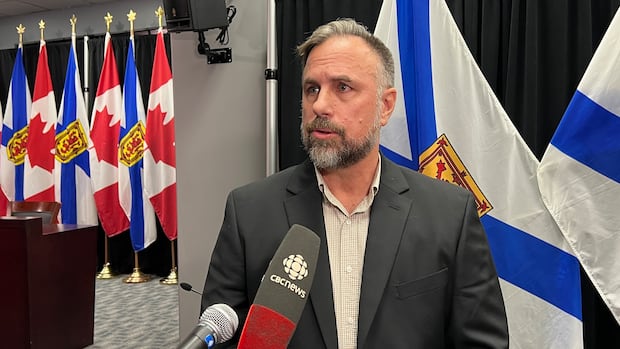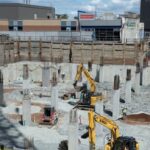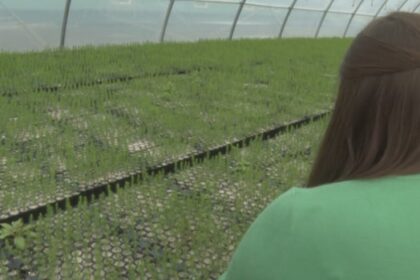Nova ScotiaThe plateauing of Nova Scotia’s record-setting population growth should mean the current slate of new school projects on the books for the Halifax region will be able to meet demand now and for the foreseeable future, according to education officials.Halifax Regional Centre for Education expecting slower growth in coming years after record boomMichael Gorman · CBC News · Posted: Oct 15, 2025 4:10 PM EDT | Last Updated: 2 hours agoSteve Gallager is executive director of the Halifax Regional Centre for Education. (Paul Porier/CBC)The plateauing of Nova Scotia’s record-setting population growth should mean the current slate of new school projects on the books for the Halifax region will be able to meet demand now and for the foreseeable future, according to education officials.Steve Gallagher, executive director of the Halifax Regional Centre for Education, said that annual modelling projects growth at 400 to 500 students per year for the next few years, a major cooling off after enrolment increased by more than 11,000 students since 2017.“I think our highest year, which was four years ago, was around 2,200 students,” Gallagher told reporters Wednesday, noting that that’s the equivalent of adding a new high school and junior high to the system in a single year.After being caught flat-footed by the population boom that came with the COVID-19 pandemic, Gallagher said a variety of measures are starting to get the province’s largest education region back in a position where it can handle current growth and be ready for what’s to come in future years.More maintenance for schoolsSince 2017, the Halifax Regional Centre for Education (HRCE) has opened eight new schools and there are plans for another 11 in the coming years. There have also been 187 modular classrooms added to the system, 53 portables, and increased spending to maintain and upgrade existing schools.“In HRCE, roughly 50 per cent of our schools are older than 1960, so we have a very old inventory,” said Gallagher.”But it’s well kept and the investment that we’re seeing now in managing the buildings themselves will keep us in good stead in addition to all of the new capital.”That new capital was the subject of a recent auditor general’s report that raised questions about how the provincial government plans and prioritizes where new schools are built. The report was the topic of a meeting Wednesday of the legislature’s public accounts committee.Paul Wozney is the NDP education critic. (Paul Poirier/CBC)NDP education critic Paul Wozney, a former teacher, said he did not come away from the meeting — which included senior officials from the Education Department and Public Works Department — with any further confidence in the process that determines how growing areas get new schools.“If you’re a rank-and-file Nova Scotian, it still feels like new school builds are candy being handed out by the government rather than being the result of smart evidence, community engagement and long-term planning that makes sense for the current and future needs of community,” he told reporters.Wozney said he remains concerned about the lack of community engagement that goes into the planning process for a new school.Deputy education minister Tracey Barbrick told committee members that consultation with a community begins at the design phase of a project. Wozney said that isn’t soon enough.“Government doesn’t seem to prioritize listening to community about what they need until after they’ve told them what they’re going to get,” he said.Liberal education critic Iain Rankin said he’s concerned that, at a time when the Progressive Conservatives have given themselves almost complete control over planning in the Halifax Regional Municipality, not enough thought is given to services to go along with housing projects that are being fast-tracked.Reserving space for schools near new housing developments should be a priority, Rankin told reporters.Iain Rankin is the Liberal education critic. (Paul Poirier)”The Education Department should be very much involved in looking at the development agreements,” he said.“We do that with infrastructure [such] as utilities, road networks, and the same should be true with schools.”The government has a $50-million fund it uses each year to buy land when it’s determined it could be useful for future developments such as long-term care homes, health-care facilities and schools.MORE TOP STORIES ABOUT THE AUTHORMichael Gorman covers the Nova Scotia legislature for CBC, with additional focuses on health care and rural communities. Contact him with story ideas at michael.gorman@cbc.ca
New school construction catching up with Halifax enrolment boom












